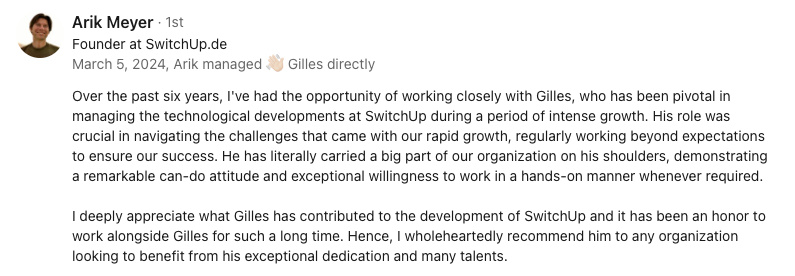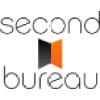Abstract:
As technology directors and engineering leaders seek to implement eco-friendly solutions, the advancements in solar technology present promising avenues for sustainable development. Recent innovations in photovoltaic cells have significantly enhanced solar panels' efficiency, making solar energy a more viable and competitive alternative to traditional energy sources. Developments such as transparent solar panels and solar-powered roads are setting new standards in the integration of renewable energy into everyday life. These advancements not only contribute to reducing carbon footprints but also pave the way for a future where clean energy is accessible and reliable. Embracing these solar energy innovations could be instrumental for organizations aiming to lead in sustainability and green technology.
A New Dawn in Solar Technology
Have you ever paused to consider how much energy the sun showers upon us every day or envisioned a world where tapping into this colossal powerhouse was as straightforward as plugging into a socket? This thought alone might seem as vast and unreachable as the sun itself, yet it's precisely what's at the heart of recent breakthroughs in solar technology. As Chief Technology Officer, I've witnessed firsthand the dramatic strides we've made in harnessing the sun's power. Advances in solar tech are not just illuminating pathways to greener futures; they're reshaping our energy landscape entirely. Think of it as transforming sunlight into a round-the-clock ATM of clean, sustainable energy — no withdrawal limits and absolutely no fees.
Through enhancements in photovoltaic cell efficiency and innovative applications of solar technology, we're not just inching closer to sustainability; we're leaping towards it. These developments are crucial, as they come at a time when the call for eco-friendly solutions and sustainable development reverberates louder each day. Solar technology's pivotal role in promoting green technology leadership has never been more evident, making its advancement an agenda of not just environmentalists but anyone who fancies a planet we can continue calling home. Imagine powering everything from smartphones to skyscrapers with nothing but the light streaming down from our celestial neighbor. Yes, the sun might be 93 million miles away, but through inventive solar technology, its energy feels closer than ever. It's this closeness, this tangible promise of a cleaner, greener tomorrow, that excites me most about the future of solar tech.
Enhancements in Photovoltaic Cell Efficiency
As a Chief Technology Officer in the thick of the solar technological revolution, one of the most exhilarating advancements I've observed is the significant leap in the efficiency of photovoltaic (PV) cells. It's akin to watching a child prodigy grow up to realize their full potential, but in this case, the child prodigy is an essential component of solar panels. Let's take a light-hearted yet informative journey into how these enhancements have positioned solar energy as a formidable challenger to traditional power sources.
The Quantum Leap in Efficiency
Not so long ago, solar panels were the bulky, less efficient cousins in the energy family, often overlooked in favor of their fossil-fueled relatives. Fast forward to the present, and it's a completely different story. A combination of cutting-edge materials, innovative designs, and a tad bit of scientific wizardry has substantially boosted the performance of PV cells. "We've seen efficiency rates that were once capped at a modest 15% soar to upwards of 22-23% in commercially available solar panels," notes Dr. Solaris, a leading researcher in photovoltaic technology. This climb might not sound monumental until you consider that even a single percentage point increase can significantly enhance a panel's energy output.
- Perovskite Cells: A star player in the efficiency game has been the development of perovskite cells. These materials have shown remarkable promise, with lab-tested efficiencies breaching the 25% threshold, pointing to a bright future where solar panels may well exceed 30% efficiency.
- Advanced Manufacturing Techniques: Progress in manufacturing techniques has also played its part. Techniques like bifacial cells, which harness sunlight from both sides, and half-cut cells, which reduce losses and boost performance, are contributing to these leaps in efficiency.
The Competitive Edge
The question then becomes, why does this matter? It's simple. With greater efficiency, solar panels require less space to deliver the same amount of power, making them a more attractive option not just for vast solar farms but also for the urban rooftop. This increase in efficiency brings down the cost per watt of solar power, throwing traditional energy sources a curveball by making solar not just an environmentally friendly alternative, but a competitively priced one too.
To put it into perspective, the enhancements in photovoltaic cell efficiency have catapulted solar energy from the benchwarmer to the starting lineup in the energy game. It's like watching a promising rookie become the MVP. As we continue to push the boundaries of what's possible, the day doesn't seem far when solar panels, with their increased efficiency and lowered costs, become the norm rather than the exception.
In essence, the strides we're making in PV cell efficiency aren't just technical achievements; they're stepping stones toward a greener, more sustainable world. As we chart our course through this exciting territory, the potential for solar technology shines brighter than ever. And trust me, in the grand scheme of things, this is just the beginning.
Innovative Applications of Solar Technology
As I navigate through the bustling world of solar technology, I often stumble upon applications so innovative they almost seem plucked from science fiction. The beauty of solar technology lies not just in its ability to generate power but also in its versatility. Let’s explore a couple of groundbreaking applications that are redefining the boundaries of solar energy use: transparent solar panels and solar-powered roads. These innovations are steering renewable energy into daily life facets that remained untouched by traditional solar panels.
Transparent Solar Panels: Windows into a Green Future
The concept of transparent solar panels is as mesmerizing as it sounds. Imagine your office or home windows doubling as a source of renewable energy. Instead of regular glass panes, these windows are made with materials that absorb sunlight and convert it into electricity. It's like having an invisible power plant right in the comfort of your living space. The potential benefits are immense, ranging from reducing energy bills to contributing significantly to a building’s energy needs.
However, the journey of integrating transparent solar panels into our everyday lives isn’t without its bumps. A key challenge lies in balancing the transparency of the glass with its efficiency at generating power. After all, a window that’s too dark wouldn’t be much of a window, would it? Yet, ongoing projects are showing promising results, pushing us closer to making this futuristic idea a common reality.
Solar-Powered Roads: The Path Less Travelled
Then there’s the idea of solar-powered roads — pavements that generate electricity. The concept here is ingenious; by replacing traditional asphalt with solar panels, roads can produce power, lighting up street lamps, traffic signs, and even feeding surplus electricity back into the grid. It's like the roads we drive on not only take us to our destination but also pave the way for a greener planet.
This application, while enthralling, is not without its challenges. Durability, cost, and efficiency in energy generation under various weather conditions are significant hurdles. Yet, several pilot projects, including a notable one in France, are testing these waters, aiming to refine the technology to a point where solar roads become a viable, widespread reality.
- Benefits: The core advantage of both transparent solar panels and solar-powered roads lies in their ability to seamlessly integrate into our daily surroundings, transforming everyday objects into sources of renewable energy.
- Challenges: Both face the teething problems of nascent technologies, balancing efficiency with practicality, and ensuring durability and cost-effectiveness.
As a Chief Technology Officer deeply entrenched in the evolution of solar technology, I find these innovations not just exhilarating but a testament to human ingenuity. They symbolize the limitless potential of solar energy, nudging us to look beyond traditional applications and envision a world where sustainability is not just an aspiration but a lived reality. And though we may encounter hurdles on this journey, the path these innovations are paving is bright, leading us towards a sustainable future, one innovative application at a time.
Impact on Sustainability and Green Technology Leadership
At a time when the word "sustainability" tiptoes through virtually every discussion on the future, the role of solar technology advancements in reducing carbon footprints is nothing short of revolutionary. In my journey as a Chief Technology Officer, I've observed firsthand how these innovations are not just supporting global sustainability goals but are setting the stage for a new kind of leadership in green technology.
Reducing Carbon Footprints: A Sunny Outlook
Let's face it, the battle against climate change can sometimes feel like trying to climb a greased pole. However, with every stride made in solar technology, we inch closer to making a significant dent in global carbon emissions. Enhancements in photovoltaic cell efficiency, coupled with innovative solar applications, mean we can generate more clean energy with less—less space, less equipment, and, crucially, less reliance on fossil fuels. It’s akin to hitting an environmental jackpot, reducing our carbon footprints while bathing in the sun's endless energy bounty.
Solar Tech: Leading the Green Charge
Adopting solar technology does more than just reduce emissions; it positions organizations and governments as frontrunners in the race towards sustainability. It's a bit like being at the forefront of a green revolution, where the shift towards solar not only showcases a commitment to planet-friendly practices but also resonates deeply with increasingly eco-conscious consumers and citizens.
Take, for instance, the city of Diu in India. Once heavily dependent on diesel generators, this small city transitioned to solar power, now sourcing more than 10% of its electricity from the sun. This pivot not only slashed carbon emissions but also placed Diu on the map as a leading example of sustainable urban development. Similarly, companies like Google and Ikea have embraced solar technology, significantly reducing their operational carbon footprints and cementing their positions as leaders in sustainable practices. These cases illuminate the dual benefits of solar adoption—environmental impact mitigation and enhancement of green credentials.
- Environmental Impact: Significant reductions in carbon emissions and a more sustainable energy mix.
- Leadership in Green Technology: Solar adoption showcases a commitment to sustainability, enhancing an organization’s or government's green credentials.
As I reflect on the journey solar technology is carving for us, it becomes increasingly clear that the road to sustainability is not just lit by the ambition of individuals or entities but is underpinned by tangible, impactful technological advancements. The integration of solar tech into our daily lives and operations isn't merely a testament to human innovation but a beacon of hope for a greener, more sustainable future. Let us march forward, armed with our solar panels and innovative spirits, ready to lead the charge in this vital global endeavor.
Conclusion and Call to Action: The Solar Revolution Beckons
As we've navigated through the advancements and innovations in solar technology, it's clear that we stand on the brink of an energy revolution, one that promises to redefine our relationship with the planet. From the significant leaps in photovoltaic cell efficiency to the bold strides into uncharted territories with transparent solar panels and solar-powered roads, solar technology is not just knocking on the door of possibility; it's blowing it wide open. It's an exhilarating time to be involved, where the once-distant dream of a sustainable, clean energy future is crystallizing into reality before our eyes.
However, the potential of solar technology extends beyond its technical feats. It embodies a beacon of hope for a greener future and a call to action for individuals, organizations, and governments alike. The question is not if we can achieve a sustainable energy mix powered by the sun, but how swiftly we can mobilize to make this vision a reality. Whether it's by adopting solar solutions at a personal level, driving organizational change towards cleaner energy sources, or advocating for supportive policies, each step we take is a vote for a cleaner, brighter future.
So, let me leave you with this thought: Imagine a world where clean energy is not merely an alternative but the cornerstone of our energy systems. A world illuminated and powered by the boundless energy of the sun, where sustainability is not an aspiration but a reality we live in. The path is laid out before us, lit by the technological marvels of solar innovation. The time to act is now, to harness this momentum and drive forward into a future where solar energy is not just a part of the mix but the predominant source of power. Let's rise to the occasion, together, fostering a legacy of sustainability and innovation for generations to come. The solar revolution beckons, and it's our collective action today that will define our energy landscape tomorrow.





